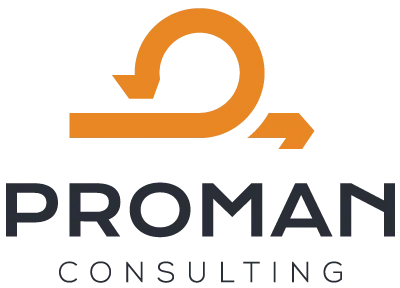Developing a customised project management methodology
Development of a customised project management methodology for fit-out projects in facility management
Industry: Facility Management
Objectives, executive summary
The aim of the project was to develop a customised, simplified project management (PM) methodology for the client's facilities management business that could effectively manage the growing number of fit-out projects. The client site had previously experimented with implementing a project methodology for the investment area, but this was overly complex and regimented to manage the project-like tasks and fit-out projects of a team that mainly performed operational management tasks. The aim was to develop an easy to follow but efficient PM process and documentation system that would support projects that could be implemented quickly and ensure transparency and efficiency.
Client background and environment
The client is the facility management division of a Hungarian property management company with an international background, which was looking for an efficient solution to manage its growing number of projects, especially fit-out projects. The business was mainly dealing with operational tasks, but recently the number of projects and project-like tasks they were managing had increased significantly. The company has its own construction business, which already has a tightly controlled project methodology, but the operational management team found this methodology too complex for daily use, and therefore requested the development of their own simplified project management process.
Objectives, tasks
The objectives and tasks of the project were to develop and streamline the project management (PM) processes of the Facility Management business, with a focus on fit-out projects for office space refurbishment and interior design works.
One of the primary goals was to build a common language and understanding for the team based on the specifics of the waterfall model in an educational context. The team should understand the process-based project approach and work according to a common set of principles. The training had to ensure that all stakeholders, from project managers to team members, were aware of the objectives and tools for each project phase.
The other main objective was to develop a project management process tailored to fit-out projects, simplified and adapted to operational tasks, together with stakeholders. The methodology had to remain flexible, while ensuring transparency and traceability of projects, taking into account the specific needs of the business and the need to run fit-out projects quickly.
The third main objective was to develop a project management flowchart that visually presents each project phase and its associated documentation in chronological order. The diagram had to include the roles and responsibilities of the key actors, thus ensuring transparency of the process.
Finally, it was necessary to create a project management policy and methodology manual ("PM manual"), which will allow participants to easily follow the established processes, tools and documentation on their own.
Challenges, difficulties
- Colleagues in the Facility Management unit felt frustrated because they did not receive adequate support from the Investment Projects area to develop a project process that could be tailored to their needs.
- As a result of the coronavirus epidemic and closures, vacant office space provided an opportunity to rapidly implement fit-out projects, which in turn unplanned increased the capacity and tasks of the area. However, the organisational headcount could not keep pace and the volume of tasks generated by the new projects began to overwhelm the area. As capacity increases were not a reality in the short to medium term, it was of paramount importance to make internal PM processes as efficient as possible in terms of workload reduction.
- The growing number of projects and the expanding scope of tasks made it necessary to develop a simple yet effective project management system to compensate for the shortcomings in the organisational staffing.
Implementation of the task
The first step of the project was to provide project management-based training to the relevant colleagues in the facilities management business. The aim was to provide the team with a common language and understanding that they could use effectively in their projects. The focus of the training was on the waterfall-based project management methodology, which, taking into account the specificities of the field, provided a simple and well-structured basis for managing fit-out projects.
The participants worked with a concrete fit-out case study prepared by us, which gave them the opportunity to try out the PM tools and methods presented. At the end of the training, the participants evaluated the tools together and selected those they would like to use in the future. These tools were later incorporated into the project management process and the regulations.
Following the training, we organised a series of workshops and interviews with the relevant team members to thoroughly assess and identify the specifics of the fit-out projects and the specific needs of the business. These interactive sessions provided an opportunity to jointly outline the ideal project management process and define the actual and optional documentation required.
During the workshops, we elaborated in detail the project management lifecycle for fit-out type projects and defined its phases in a consistent way with milestones, content and boundaries. Each step in the phases was divided into smaller, traceable tasks and the roles and responsibilities of each project actor were defined. At this point, we have also identified the content requirements for all the documents needed for successful implementation.
Since fit-out projects require rapid implementation, the documentation had to be simple and transparent, but at the same time not omit any key information.
On the basis of the project process developed and the documents defined, we prepared a complete project flowchart for the fit-out projects, which gave a clear picture of the steps to be taken to implement the projects. For each step in the flowchart, we visually indicated the documentation identified and required, and defined the responsibilities at the level of the actors,
Once the project processes and documentation had been approved, we produced a project management manual, which provides comprehensive guidance for colleagues managing the fit-out project. The manual contains detailed and practical descriptions, with examples, of all the process steps, documents and methods to be used in the management of fit-out projects.
Throughout the project we facilitated regular consultations and feedback sessions where team members could share their experiences and questions about the new tools and process. Ongoing feedback rounds allowed us to fine-tune the outcome products and for the team to confidently integrate the new tools into their daily operations.
Results
As a result of the project, the Facilities Management business has implemented a simplified, customised project management process that effectively supports the management of fit-out projects. The new PM process and project documents have enabled projects to become more transparent, responsibilities to be clarified and the team to work more efficiently. The PM manual and methodology guide produced will support the team's ability to work independently in the long term.

 Designabc
Designabc